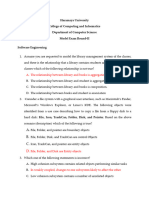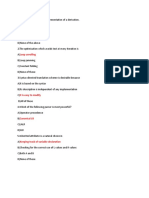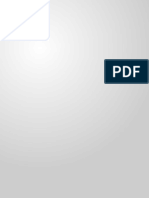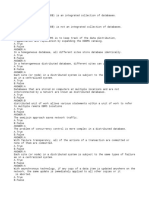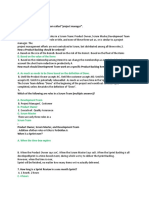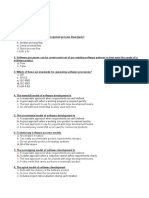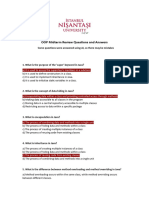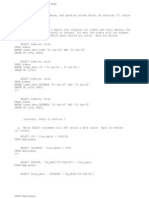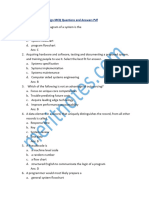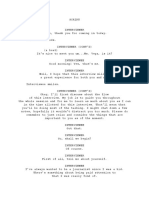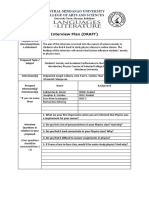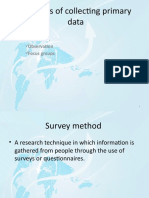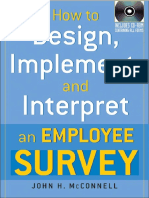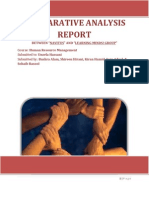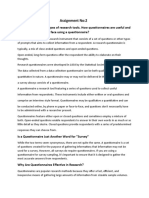0% found this document useful (0 votes)
1K views9 pagesDetermining System Requirements: Multiple Choice Questions
The document discusses techniques for determining system requirements, including interviewing stakeholders through open-ended and closed-ended questions, observing users, and analyzing documentation like written procedures, forms, and reports. Good interview guidelines involve seeking various perspectives, and it is important to identify duplications of effort found in analyzing documentation.
Uploaded by
bigolCopyright
© © All Rights Reserved
We take content rights seriously. If you suspect this is your content, claim it here.
Available Formats
Download as PDF, TXT or read online on Scribd
0% found this document useful (0 votes)
1K views9 pagesDetermining System Requirements: Multiple Choice Questions
The document discusses techniques for determining system requirements, including interviewing stakeholders through open-ended and closed-ended questions, observing users, and analyzing documentation like written procedures, forms, and reports. Good interview guidelines involve seeking various perspectives, and it is important to identify duplications of effort found in analyzing documentation.
Uploaded by
bigolCopyright
© © All Rights Reserved
We take content rights seriously. If you suspect this is your content, claim it here.
Available Formats
Download as PDF, TXT or read online on Scribd
/ 9
















